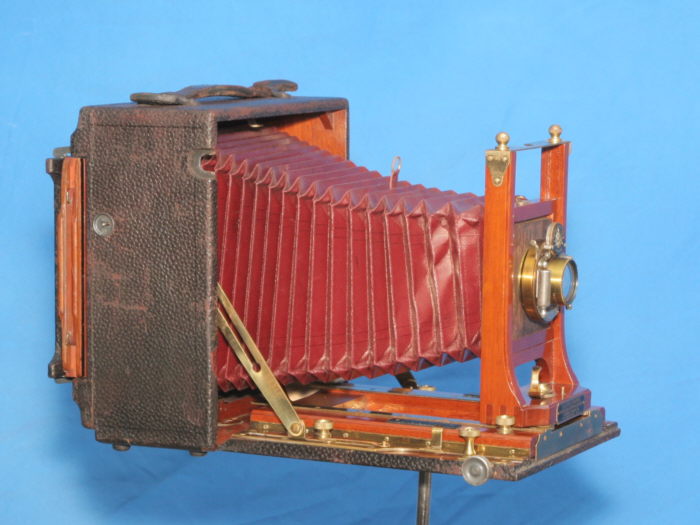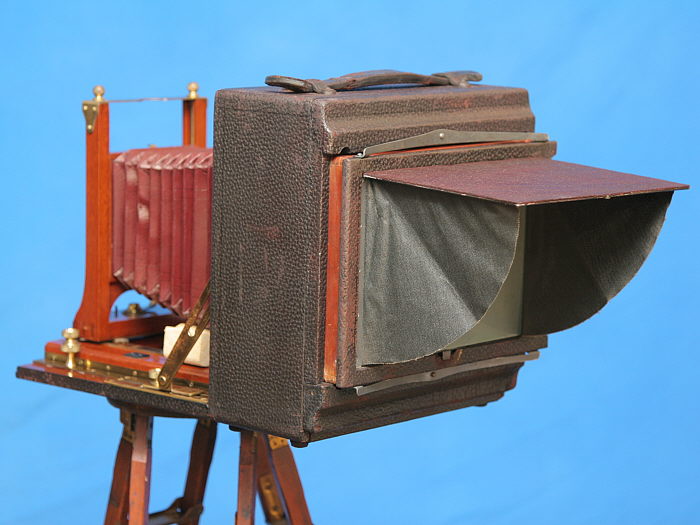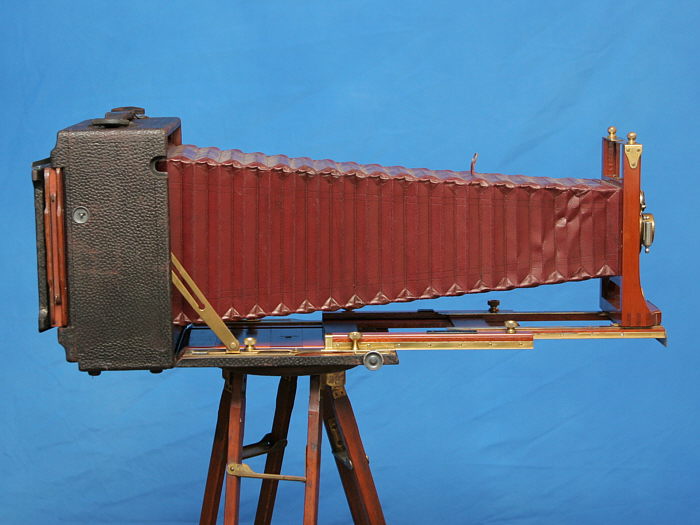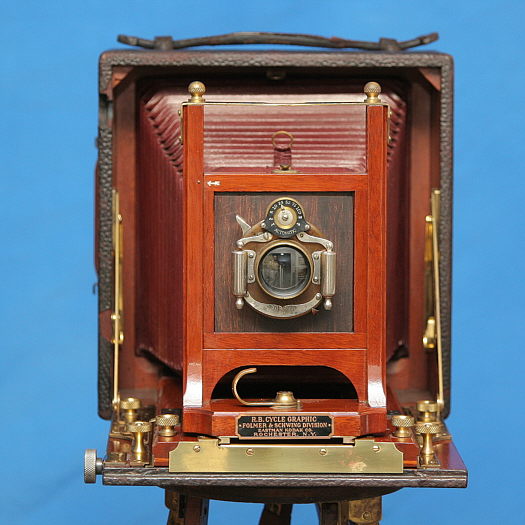This is not our oldest camera (I actually have to ponder just which one that is), but it is one of our favorites, a 5" x 7" format Revolving Back ("R.B.") Cycle Graphic, made in about 1915 by the then-current manifestation of the Graflex dynasty, the Folmer & Schwing Division of Eastman Kodak Company:
The term “cycle” in its name was meant to exploit the association, in the early part of the 20th century, between bicycling and photography. (Imagine schlepping such a machine, plus a box of plate holders and a spiffy Crown wood tripod, on your bicycle. Perhaps that lovely girl from the University's power lifting team would come along.)
“Revolving back” means that the film may be oriented in either the familiar “landscape” or “portrait” orientation or any orientation in between with the camera in its "normal" orientation. The back has a lovely integral focusing hood:
The camera has an extensible bed to provide for an extraordinary bellows extension, intended to support the possibility of serious macro work by the bicyclist-naturalist:
This specimen is equipped with a Rochester Optical and Camera Company “Symmetrical” lens (8” focal length, maximum aperture f/9) mounted in a Rauber and Wollensak “Automatic” shutter. The lens and shutter are believed to date from the period 1901-1903. As with the camera we just saw in Martin's post, the lens aperture setting is marked in the “Uniform System” scale, not in terms of f/number.
The shutter offers instantaneous speeds from 1 sec to 1/100 sec, with the slower speeds timed by a pneumatic cylinder (to the right of the lens, as seen facing the shutter). It also offers the classical bulb and time modes for longer exposures.
The shutter can be tripped with a lever on the lens, or by a rubber bulb connected by tubing to a pneumatic cylinder on the left side of the lens. What looks like a hose connection on the bottom of the right hand (timing) cylinder is a dummy, included for visual symmetry.
As the name suggests, the shutter is “automatic”: it is not necessary to cock it before operating it.
The camera has a rising front, and back tilt by way of bed drop/rise, but no other movements.
The design of this camera foretold the emergence of the Speed Graphic press camera in 1912.
Further information on this model and this specimen are found in our museum catalog section for this specimen, here:
http://dougkerr.net/museum/Exhibit_RB_Cycle_Graphic.pdf
Best regards,
Doug







